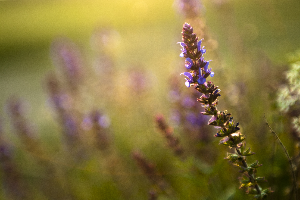
Few countries have an allergy season quite as merciless as Australia's. The transition from winter to summer can be a hellish one for hay fever sufferers, as sprouting plants and flowers release their allergenic loads of pollen into the atmosphere. As such, hay fever sufferers should take every precaution they can to limit their exposure to pollen which can provoke their condition, and one of the most effective ways of doing this is by placing an air purifier in your home.
The runny nose and other cold-like symptoms of hay fever are not caused by any disease or pathogen, but are an allergic reaction provoked by small particles that enter the nose. Typically, these particles are airborne pollen particles, released by a countless variety of plants during the spring and summer to fertilise other plants. However, hay fever can also be provoked by other, non-plant based piece of particulate matter, such as dust, skin flakes and dust mites carcasses.
Installing an air purifier in your home, therefore, can be a tremendous boon for any hay fever sufferer. These purifying devices pass the air in your room or home through a serious of extremely fine filters, removing virtually all traces of solid matter (including pollen particles) from the air before releasing it back into your home.
Some air purifiers supplement this process using solid, absorbent materials that attract and hold particles, or with intense heat that denatures pollen particles until they can no longer provoke a reaction. In any case, the result of an air purifier’s labours is purer air in your home, making it a safe haven against the worst of the allergy season.
Air Cleaners Australia offer an enormous variety of air purifier types, with different capabilities suited for differing air purification needs. As such, it can be difficult to choose the right air purifier for your hay fever reduction needs, but keeping the following key points in mind should help you make the right choice:
Of course, buying the most expensive air purifier you can find won't do much for your allergies if you place it somewhere where it cannot purify air efficiently. Air purifier placement is essential for proper hay fever management, and you have two main options when it comes to finding the right spot for your device:
Hopefully, this blog will help you find the right air purifier to make your home life much more bearable this allergy season/ However, if you have any further questions or concerns, or want to speak to one of our professionals about purifier choice or placement, feel free to contact us.
